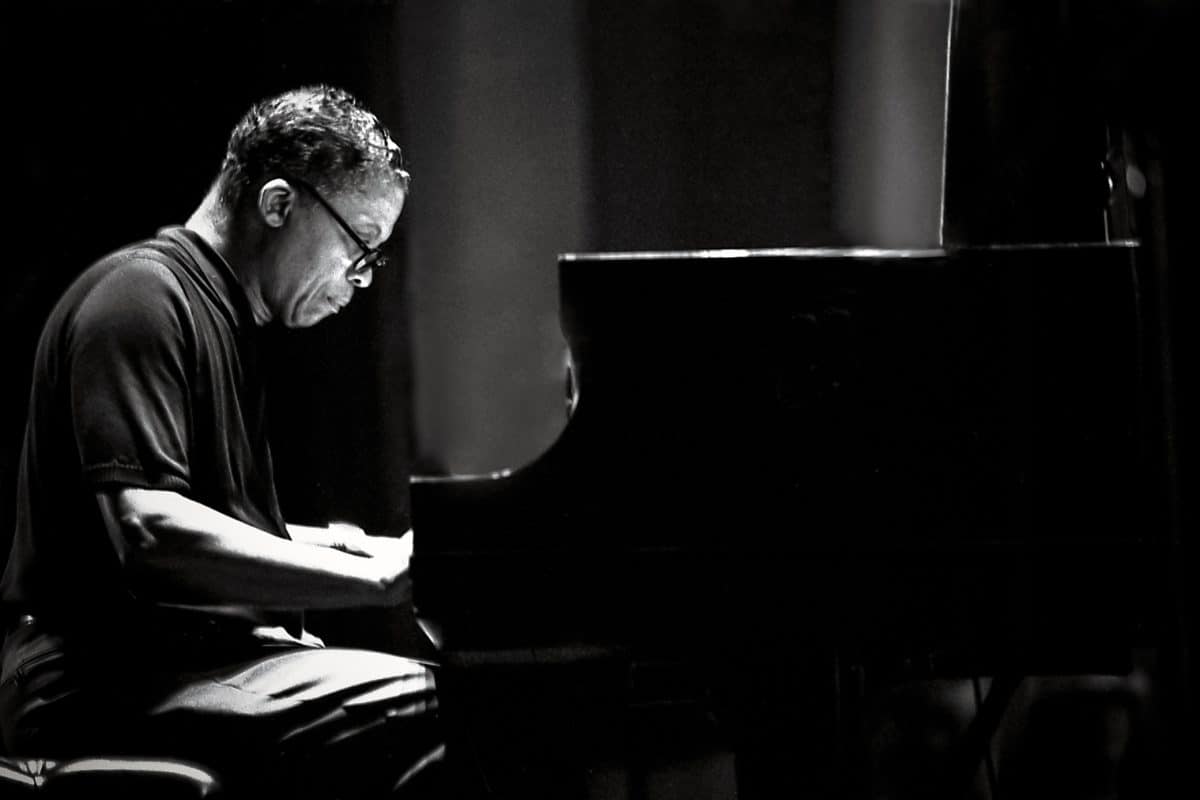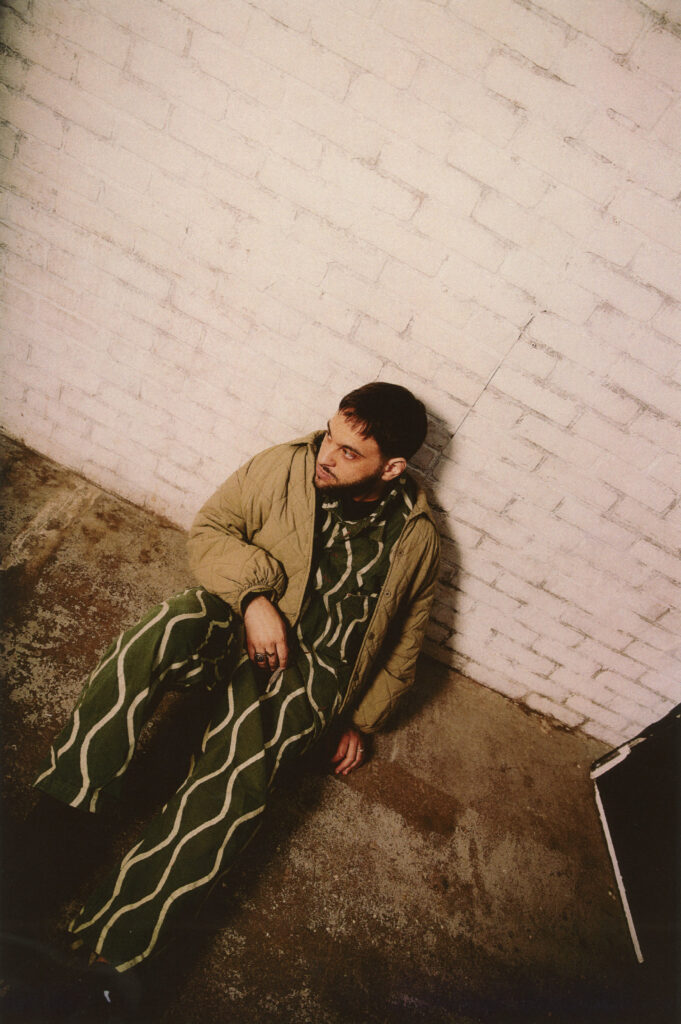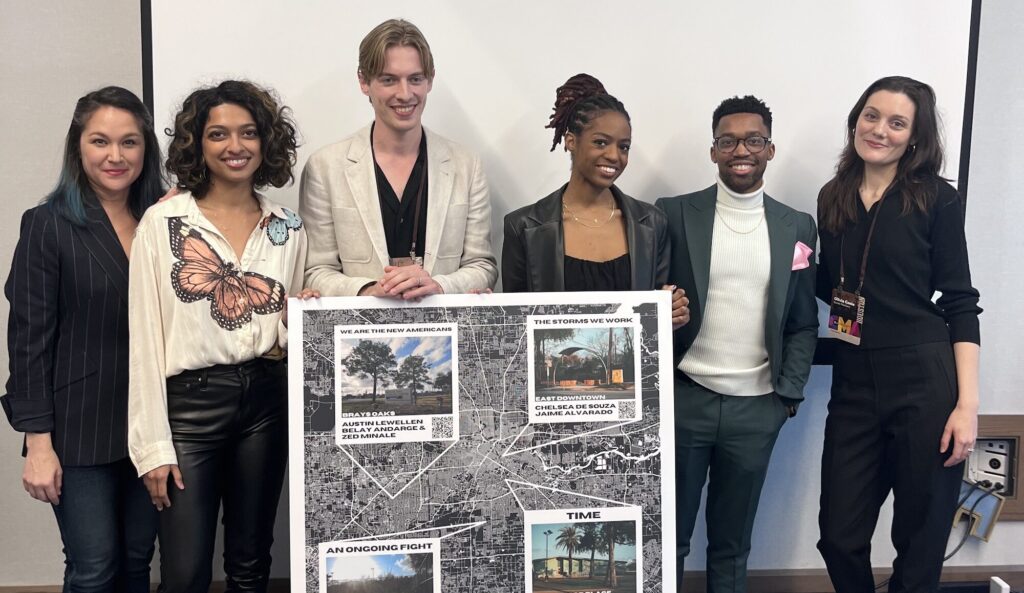The Complete Herbie
It is nearly impossible to sum up Herbie Hancock’s ambition and influence as a pianist, composer, and small-ensemble leader. And he’s not done yet.

“Chamber music” generally means listening, it means give and take, it means everyone takes turns accompanying everyone else. In his musical world, which spills well beyond the jazz community that holds him dearest, Herbie Hancock is unanimously considered one of the great team players.
Drummer Billy Hart, who played in what some consider Hancock’s most fully realized ensemble as a leader, the Mwandishi sextet, told me: “Of anybody I ever played with, Herbie Hancock is the best example of someone willing to surrender himself to the full band to create a successful composition. . . . He seemed to be playing not just with whatever I had just played, but he was reading my mind and anticipating what I would play next. He guided me like a witch doctor into the better form of whatever I wanted to play next.
“Everybody else in the sextet felt that way, too, that Herbie could read everyone’s mind and support the next event before that event even happened. Herbie deserved that Swahili name, Mwandishi, meaning ‘composer.’ It wasn’t just that he wrote the tunes, it was that Herbie enabled the whole sextet to coalesce into spontaneous, evening-length composition.”
Early on, Hancock could be heard in his role as catalyst on a famous recording by Miles Davis. My Funny Valentine was recorded at a live concert in 1964 with Hancock, tenor saxophonist George Coleman, bassist Ron Carter, and drummer Tony Williams. The LP opens with the title tune, a familiar ballad by Richard Rodgers and Lorenz Hart. A generation earlier, on the 1956 Miles Davis album Cookin’ with the Miles Davis Quintet, pianist Red Garland had set up Davis with a piano introduction that beautifully and safely lands in the opening key, C minor.
The 1956 track is a gorgeous reading, but Davis was never one to stay in the same place; he encouraged his sidemen to experiment. In 1964, Hancock also set up Davis. They remain somewhat close to C minor at first, but when Carter comes in for the second “A” section around the one- minute mark, Hancock defies all tradition and plays a D-flat Phrygian chord (rather than the indicated C minor). The emotion at once becomes yet more veiled and mysterious. Davis responds instantly, validating Hancock’s outré suggestion with a poignant D-flat from his trumpet. The ensemble takes a deep breath and commences miraculous chamber playing for the duration of the LP.
This is the Hancock that the hardcore jazz fans know and love, the benchmark acoustic pianist, revered not just for his extraordinary work with Miles Davis but also on his 1960s albums as a leader like Empyrean Isles (1964) and Maiden Voyage (1965). Of course, that work with Davis includes his participation in the trumpeter’s Second Great Quintet, from 1964-68, alongside tenor saxophonist Wayne Shorter, and Carter and Williams, which remains a lodestar in terms of modern-jazz small-ensemble interaction.
As considered from a nearly opposite angle, Hancock is one of the most brilliant hitmakers in jazz, influencing diverse generations though dance hits like “Chameleon” (from 1973’s Head Hunters, one of the best-selling jazz LPs of all time) and “Rockit” (an era-defining single from 1983’s Future Shock). A tiny bit of personal history might help contextualize this unique breadth: When I was ten years old, I watched my friends breakdancing to “Rockit” on the school playground in Downsville, Wisconsin (unincorporated, population about 140). A few years later, when I was beginning to get into jazz, I’d sit at the piano and try to learn Hancock’s voicings from Miles Davis records.
Hancock has garnered 14 Grammy Awards. He’s scored 11 movies, one of which earned an Academy Award. He’s recorded Joni Mitchell’s “Edith and the Kingpin” with Tina Turner and performed George Gershwin’s Rhapsody in Blue with the Los Angeles Philharmonic, as conducted by Gustavo Dudamel. Last year he put on a dark suit and supplied ruminative and exploratory solo piano for Madeleine Albright’s funeral service; more recently, he wore a flowing robe while in charge of a hot band of younger musicians on a world tour. Hancock plays piano in his 2023 band, but he also takes funky solos on keytar, an electronic keyboard instrument worn much like a guitar, and conjures science- fiction landscapes with synthesizer and vocoder. No matter the context, it almost always sounds, singularly, like Herbie Hancock. The word “eclectic” doesn’t really fit: His is a unified aesthetic that commands exceptionally diverse material.
What exactly is that unique unified aesthetic? Jazz pianists who transcribe his improvisations know a few obvious technical details from the early years. The harmonic palette might be called Impressionistic, where the basic tonal harmony is thickened by modal color tones, extending a line from Ravel and Debussy to Gil Evans and Bill Evans. One of his signature compositions, “Maiden Voyage,” is comprised of four Impressionistic chords. In jazz, we might call this “suspended” harmony, probably because these chords hang in the air and give the music a smoky texture. There are wide intervals in his improvised melodic line and a near- constant reference of the octatonic scale also favored by Scriabin, Messiaen, and Coltrane. Many signature Hancock voicings are combinations of diminished chords, sometimes even all eight notes of the octatonic scale at once. Hancock also likes to play a half-step above the original har- mony, which is probably why he played that shocking D-flat Phrygian chord at the top of “My Funny Valentine.”
These esoteric harmonic concepts are leavened by earthy qualities. In the early days, Hancock was already very swinging and bluesy, and the funkier side became much more overt when he was around 30 years old. The way he combines esoteric harmony and earthy rhythm is one big reason why Hancock has stayed the course and become instantly recognizable despite his varied output.
 Photo: Douglas Kirkland
Photo: Douglas Kirkland
Not every superstar is willing to give up secrets, but in his 2014 memoir Possibilities, Hancock was ready to explain his early history and eager to thank his teachers. The base was mastery of European classical piano. Hancock began taking lessons when he was seven years old. At 11, he played the first movement of Mozart’s Piano Concerto no. 18 in B-flat major, K. 456 for a youth competition held by the Chicago Symphony Orchestra. He won the competition, and then played the first movement of Mozart’s “Coronation Concerto” onstage with the Symphony in early 1952.
After conquering the pure European idiom as a prodigy, Hancock moved onto jazz, first learning colorful harmony and theory from George Shearing records, and then emulating more advanced jazz phrasing soaked up from Erroll Garner and Oscar Peterson. In college, Hancock would begin exploring music for larger ensembles. In 1957, he transcribed an eve- ning’s worth of Count Basie big band charts and made the amateur student players at Grinnell College in Iowa learn the book. “I started section rehearsals for each instrument in the band,” he wrote. “What I discovered was that while everybody could play the notes, only two people knew anything about jazz phrasing. I didn’t want to go through all this trouble to put on a mediocre concert, so I personally conducted every section rehearsal—the saxophone players, the trombone players, the trumpet players. And because nobody knew how to solo, I had to write those parts out, too.”
The Hancock story continues in this wide-eyed and wide-eared fashion, always invested with a serious student’s rigor. He’s open to advice from all sources. Donald Byrd (sharing practical wisdom from Barry Harris) taught him to play fast. Eric Dolphy and Tony Williams showed him modernist chamber music. Miles Davis suggested that he leave more space. Joe Zawinul advised him to keep each line horn varied but singable when writing original music for sextet. When Bill Cosby asked him to write music for the 1969 animated television special Hey, Hey, Hey, It’s Fat Albert, Hancock knew the sounds had to be funky, so: “The first thing I did was go to the record store. I bought about fifteen James Brown-type records and then spent a couple of days listening to them over and over again.”
For the 1978 book The Black Composer Speaks, David Baker asked Hancock about his influences. Hancock seems ready for this question, for his answer fills the page, and it spills out much like an extended solo, flecked by both classical music and jazz. “Igor Stravinsky influenced me in terms of orchestral sounds and colors as well as in terms of composition,” he told Baker. Bartók and Penderecki informed his compositional ideas. Both Messiaen and Tony Williams affected him “from a rhythmic standpoint.” Miles Davis influenced “my playing and also in the concept of the development of music by the whole band rather than just by myself.” He mentions Gil Evans—“and when I say Gil, that also includes Miles because Miles was such a big influence on Gil.” He talks about John Coltrane, McCoy Tyner, Keith Jarrett, Ravel’s Daphnis et Chloé, and Debussy almost in the same breath, and then moves on to Sly Stone, James Brown, Rufus, Stevie Wonder, Ravi Shankar, Ali Akbar Khan, and other Indian musicians.
Indeed, perhaps nobody else has covered so much ground with such depth and which such clear points of connection—and we haven’t even gotten to Afro-Cuban, odd-meters, the Moog synthesizer, or hip-hop. His interview with Baker was done not long after Hancock scored the major Hollywood production Death Wish, for which, he wrote, “I bought Earle Hagen’s book [Scoring for Films: A Complete Text] and spent two weeks studying it.”

In addition to doing his homework, Hancock has a preternatural ability to salt and sugar the recipe for the correct blend. If the starting point is simple, Hancock adds spice. If the starting point is complex, Hancock trims off the fat. Two of my own favorite Hancock trio performances are of themes from Ron Carter— one of his key associates, and the most recorded bassist in history. “First Trip” (on Hancock’s 1968 album Speak Like a Child) and “Einbahnstrasse” (on Carter’s Uptown Conversation, from 1969) are both charming, basic melodies that sit just barely the right side of trivial. Hancock goes on a rampage with both, finding all sorts of unexpected experimental harmonies and rhythms within these slight frames (Carter told me “Hancock was on fire!” on “Einbahnstrasse”). This is Hancock at his most virtuosic and wildly complex.
However, even something as instantly accessible as Hancock’s 1983 hit “Rockit” has an esoteric side. The little blues tune (which is just about the only thing in “Rockit” you could write down with European notation) goes at tempo and then at half-speed, i.e., twice as slow. A European-styled composer would call this technique “augmentation.” As far as I know, “Rockit” is the only dance hit in history that uses augmentation. “Rockit” also has another of those Hancock fingerprints—an Impressionistic, dissonant chord, a half-step above the harmony, that floats in and out of the sonic texture.
The converse is also true. No matter how sophisticated a song, Hancock never hesitates to emphasize clear and memorable ideas. This is a major factor in his transition from every insider’s favorite jazz pianist to international multimedia star. Hancock was a strong influence on fellow pianist Chick Corea, who, in an interview with writer Mark Stryker, alluded to Pablo Picasso while discussing Hancock’s pianism: “Did you ever see a collection of Picasso’s work and a series of things Picasso will do? There’s this one with a bull. He starts with a pretty realistic drawing of a bull, and then he keeps drawing the bull in various ways until he really gets to some renditions that are pretty abstract. Then the last version of the bull is a very simple line drawing that probably took him ten seconds to do.”
Of course, even if it took Picasso only ten seconds to create that simple line drawing, it is still Picasso doing the drawing. Many of Hancock’s hit melodies and pop productions have this kind of “simple” tensile strength. Sure, it is only a line—but it is the right line. His first big hit was “Watermelon Man,” which he played on his debut album, 1962’s Takin’ Off. (The better-known version is Mongo Santamaría’s wildly successful 1963 recording). At first glance, “Watermelon Man” seems quite basic, merely a few familiar blues riffs. In reality, each pitch curated by the composer is placed just so. The final effect is fresh and indelible.
Any quick attempt to describe or catalog Herbie Hancock will leave things out. The very sound of American music is unthinkable without his contribution. Whatever he has done, from the shimmering soundscapes of Mwandishi to the disco track “I Thought It Was You” (number 15 on the UK charts in 1978, featuring Hancock on lead vocal), there is always at least a touch of pure jazz. While not always recognized as a solo pianist, one of my favorite performances is only Hancock. His solo rendition of “Round Midnight” is an outtake from the score for Bertrand Tavernier’s 1986 film of the same name, which featured tenor saxophonist Dexter Gordon in a starring role and earned Hancock that Oscar; it can be heard on The Other Side of Round Midnight. Hancock is improvising with full command of all of his favored lineages, from Ravel (the modal harmony) to Messiaen (a scalding dissonant two-handed cascade) to Miles (overall torch-song heartbreak), all tethered to the familiar (and perhaps even overplayed) Thelonious Monk composition. The breathtaking result will be here as long as there are those to listen.



